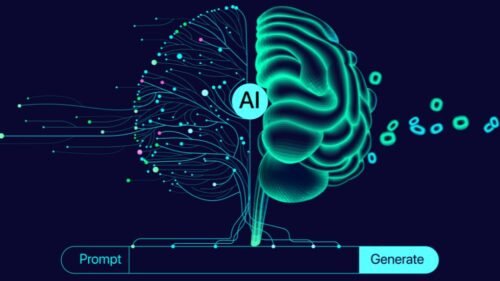A new Massachusetts Institute of Technology (MIT) study, The GenAI Divide: State of AI in Business (2025), reveals a startling reality: despite $30–40 billion in enterprise artificial intelligence (AI) investments, 95% of projects produce no measurable return. Only 5% of AI pilots ever make it into production workflows.
This failure rate is not just about technology. It reflects a systemic pattern we’ve seen across every wave of digital transformation. As Vinay Singh, an adult development scientist and founder of Intrinsicana, describes it, technology often arrives as a “blunt release”: it is unleashed suddenly into organizations and society without preparing people or their workflows. Tools appear overnight, expectations rise instantly and employees are left to sink or swim. The result? High adoption, low transformation.
The Pilot-to-Production Chasm
The MIT report refers to this as the “Pilot-to-Production Chasm.” Enterprises are eager: 90% have explored AI solutions, and many launch pilots. However, almost all stall before achieving sustained productivity or a profit and loss (P&L) impact (a financial report that provides a summary of a company’s revenues, expenses and profits/losses over a given period of time).
The core issue isn’t model quality or regulation. It’s the learning gap: AI systems don’t adapt, remember or improve over time. Organizations don’t invest in teaching people, redesigning roles or creating workflows that make these systems usable.
Consumer tools like ChatGPT thrive because they are flexible and intuitive. But enterprise-grade solutions are brittle and misaligned. As one chief information officer (CIO) put it: “We’ve seen dozens of demos this year. Maybe one or two are genuinely useful. The rest are wrappers or science projects.”
A familiar “blunt release” pattern
This blunt-release phenomenon is not new. Each wave of technology has followed the same cycle:
— Web 1.0 (dot-com era): The internet was unleashed without mass training; companies overbuilt and then cut thousands in the crash.
— Web 2.0 (social + cloud): New platforms arrived with no guidance for how people should adapt; outsourcing surged while internal teams shrank.
— Web 3.0 (crypto): The industry boomed without guardrails, then collapsed, costing billions and jobs.
— Web 4.0 (AI/automation): Today, powerful AI systems are dropped into society without instructions. Employees and leaders are unprepared, expectations are sky-high and failures mount.
The MIT report confirms this: adoption is high, but seven of nine major industries show no structural change. Only tech and media show real disruption. The rest? Experimentation without transformation.
This blunt release approach has normalized disruption without preparation. Society doesn’t ask for it, doesn’t know how to use it, yet is expected to absorb it. That’s why we see headlines of 95% failure.
Why projects stall
There is also a cultural layer to this failure. US firms, in particular, tend to hire for the lowest cost, rather than for future capability. That leaves them perpetually behind the curve. Emerging skills are often overlooked, even when talent is present.
Case in point: many US AI professionals trained at top universities struggle to find roles that value their expertise, while China has been experimenting with AI in its workforce for over a decade. This is the same pattern seen in the 1980s when Japanese automakers outpaced US manufacturers by investing in quality and skills.
The result: American corporations hoard profits instead of building societal learning. As MIT’s study shows, this leaves organizations experimenting but not transforming, while competitors move faster.
The MIT research also reveals a functional misallocation. Roughly 50–70% of AI budgets go to sales and marketing functions because outcomes are easy to measure. Yet the highest return on investment (the ratio between net income and investment [ROI]) is often in back-office automation — finance, procurement and operations — which remain underfunded.
This mirrors the larger problem: budgets chase visibility, not value. Companies spend on tools that impress boards but fail to invest in the people, workflows and hidden capabilities that generate sustainable returns.
To better understand the impact of this budgeting approach, it’s essential to examine the common pitfalls that organizations encounter. Interviews conducted across 52 organizations highlighted consistent reasons why projects often stall, shedding light on the disconnect between investment decisions and actual outcomes:
— Resistance to static tools that don’t adapt.
— Concerns about quality when systems lack context.
— Poor user experience compared to consumer tools.
— Weak change management and lack of executive sponsorship.
Here, the people gap is undeniable. Workers are not being prepared, and organizations are not listening.
The shadow AI economy
Perhaps the most striking finding is what MIT calls the “shadow AI economy.” While only 40% of companies purchased official AI subscriptions, over 90% of employees reported using personal ChatGPT or Claude accounts at work. Many used them multiple times a day.
This reveals where true resilience lies: it is people, not organizations, that drive AI adoption. Employees are already crossing the divide by learning, experimenting and gaining productivity on their own. But instead of harnessing this, organizations ignore it — focusing on formal pilots that fail while their workforce quietly innovates without support.
This pattern is decades old: executives chase technology and profits while employees fend for themselves, adapt and push boundaries. The tragedy is that organizations continue to overlook their most valuable asset: people.
The MIT report found mid-market companies scale pilots faster and more decisively — often in 90 days compared to nine months in enterprises. Why? They empower employees, align tools with workflows and avoid bureaucracy.
Large enterprises, despite massive budgets, report the lowest conversion rates. Their single-track mindset — buy technology, cut people, demand ROI — creates fragility instead of resilience.
What needs to change
Breaking the cycle requires systemic rebalancing:
— Invest in people as much as technology: Dedicate meaningful AI budgets to employee learning, role redesign and change management.
— Measure human ROI: Track adaptation speed, frontline innovations and knowledge retention, not just technical deployments.
— Empower domain experts: Give line managers authority to adapt workflows. MIT found that bottom-up sourcing of use cases consistently drives adoption.
— Form strategic partnerships: External collaborations succeed two times more often than internal builds.
— Adopt learning-capable systems: The future lies in agentic AI (tools that remember, adapt and evolve).
If corporations continue blunt-release adoption, pilot-to-production conversion will stay below 10%, billions will be wasted and layoffs will remain the default response. But if even 10–20% of AI budgets are redirected to people — upskilling, workflow redesign and retention — the success rate could rise significantly within a year.
The MIT research is clear: AI doesn’t fail because the technology is weak. It fails because organizations don’t prepare their people or workflows to use it.
This is the pattern of our century: blunt technology releases, systemic underinvestment in people and recurring cycles of disruption without transformation. Until that changes, AI will remain another chapter of wasted opportunity. But if organizations rebalance — investing in learning as seriously as in tools — AI can finally break the cycle and become the foundation for sustainable productivity, innovation and growth.
[Kaitlyn Diana edited this piece.]
The views expressed in this article are the author’s own and do not necessarily reflect Fair Observer’s editorial policy.
Support Fair Observer
We rely on your support for our independence, diversity and quality.
For more than 10 years, Fair Observer has been free, fair and independent. No billionaire owns us, no advertisers control us. We are a reader-supported nonprofit. Unlike many other publications, we keep our content free for readers regardless of where they live or whether they can afford to pay. We have no paywalls and no ads.
In the post-truth era of fake news, echo chambers and filter bubbles, we publish a plurality of perspectives from around the world. Anyone can publish with us, but everyone goes through a rigorous editorial process. So, you get fact-checked, well-reasoned content instead of noise.
We publish 3,000+ voices from 90+ countries. We also conduct education and training programs
on subjects ranging from digital media and journalism to writing and critical thinking. This
doesn’t come cheap. Servers, editors, trainers and web developers cost
money.
Please consider supporting us on a regular basis as a recurring donor or a
sustaining member.
Will you support FO’s journalism?
We rely on your support for our independence, diversity and quality.








Comment